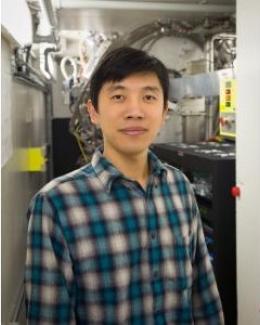Abstract
A complex hydride (LaMg2NiH7) composed of La3+, two Mg2+, [NiH4]4– with a covalently bonded hydrogen, and three H– was formed from an intermetallic LaMg2Ni via an intermediate phase (LaMg2NiH4.6) composed of La, Mg, NiH2, NiH3 units, and H atoms at tetrahedral sites. The NiH2 and NiH3 units in LaMg2NiH4.6 were reported as precursors for [NiH4]4– in LaMg2NiH7 [Miwa et al. J. Phys. Chem. C 2016, 120, 5926–5931]. To further understand the hydrogen states in the precursors (the NiH2 and NiH3 units) and H atoms at the tetrahedral sites in the intermediate phase, LaMg2NiH4.6, we observed the hydrogen vibrations in LaMg2NiH4.6 and LaMg2NiH7 by using inelastic neutron scattering. A comparison of the hydrogen vibrations of the NiH2 and NiH3 units with that of [NiH4]4– shows that the librational modes of the NiH2 and NiH3 units were nonexistent; librational modes are characteristic modes for complex anions, such as [NiH4]4–. Furthermore, the hydrogen vibrations for the H atoms in the tetrahedral sites showed a narrower wavenumber range than that for H– and a wider range than that for typical interstitial hydrogen. The results indicated the presence of intermediate hydrogen states before the formation of [NiH4]4– and H–.




